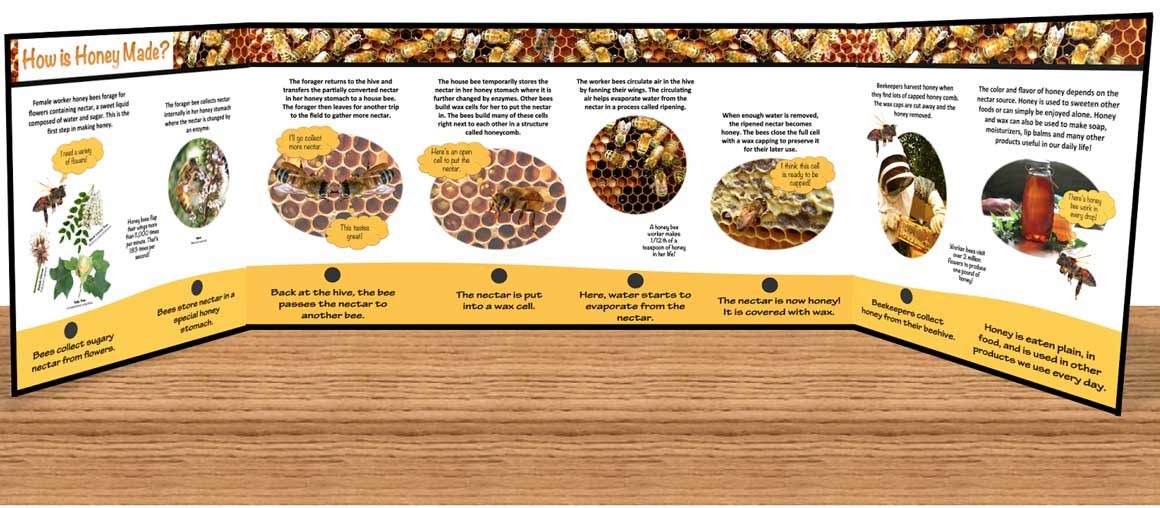How Is Honey Made?
By BeeHoneyShopin Honey
Bees will forage within a 5-mile radius of their hive, though they will generally stay as close as possible. It is interesting to watch how bees obtain their coordinates for this radius.
When you first bring your bees home, some beekeepers though not all, keep them in their hive for a few days. When let out, worker bees will make circles over the hive. This is their way of obtaining their coordinates, so they will know the location of their hive and will generally wander within that 5 miles radius.
There are many flowers that attract bees out foraging. These flowers contain sugary nectar and high protein pollen. Bees like apple, blackberry, dandelion, clover, golden rod, lavender, lime trees, ivy, rosemary and more. The sugar and protein components give the bee’s young (larvae) a good start to life. When they are full-fledged bees they also need the energy to flap their wings so quickly.
When bees collect nectar, they use a long tongue, called a proboscis, that can slide down into the flower and suck nectar out like a straw. They store the nectar in a second stomach, sometimes called a honey stomach, that doesn’t digest nectar. It serves as a carrying purse and is in front of the digestive tract of the bee. The honey stomach can hold up to 70 mg of nectar and weigh almost as much as the bee itself.
Honey bees have tiny hairs on their bodies allowing pollen to stick to them, so they can carry both nectar and pollen while flying. While the worker bees are flying and storing nectar, the honey stomach begins mixing the nectar with enzymes to start pulling some of the water out of the nectar.
It is important to note that bees do not turn their vomit into honey. That is a myth. When the bee intakes the nectar they use one of two valves, sending the nectar into the bee’s digestion. This is a good thing, because if the worker bee needs energy while in flight she can use this option while foraging.
If she doesn’t need the energy, then the nectar takes a second pathway into the honey stomach where it won’t be digested. Once bees make the choice to begin digesting the nectar, then that nectar cannot be used to create honey.
